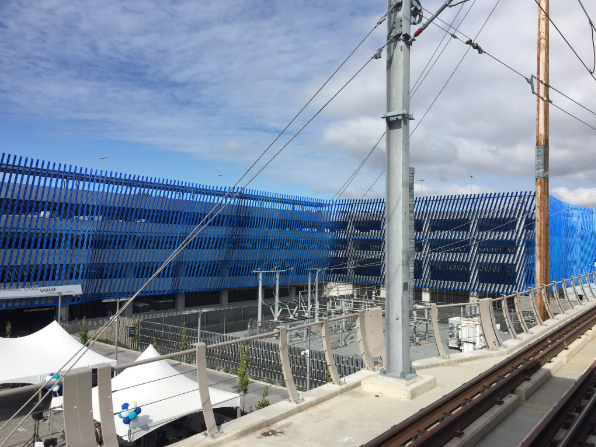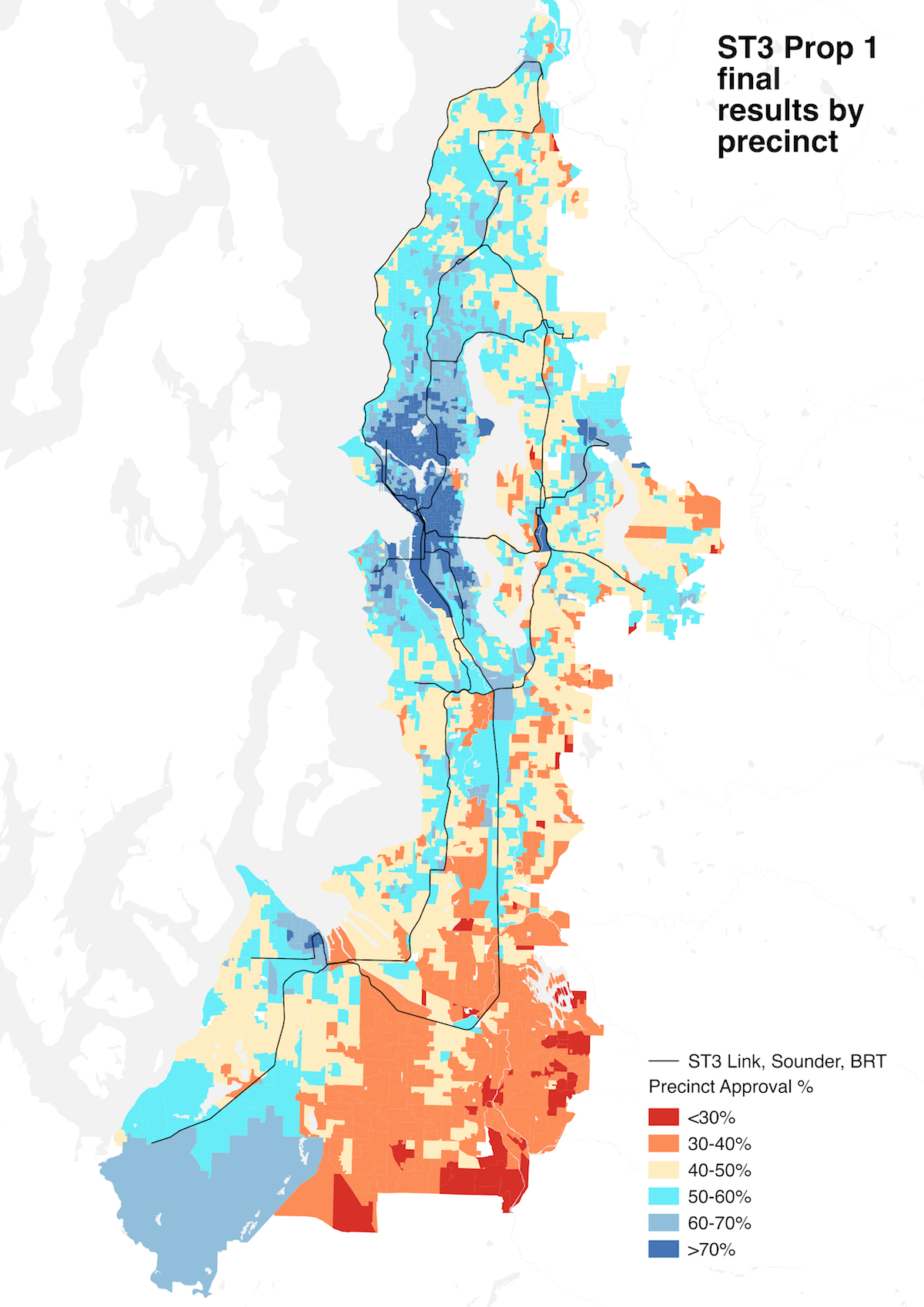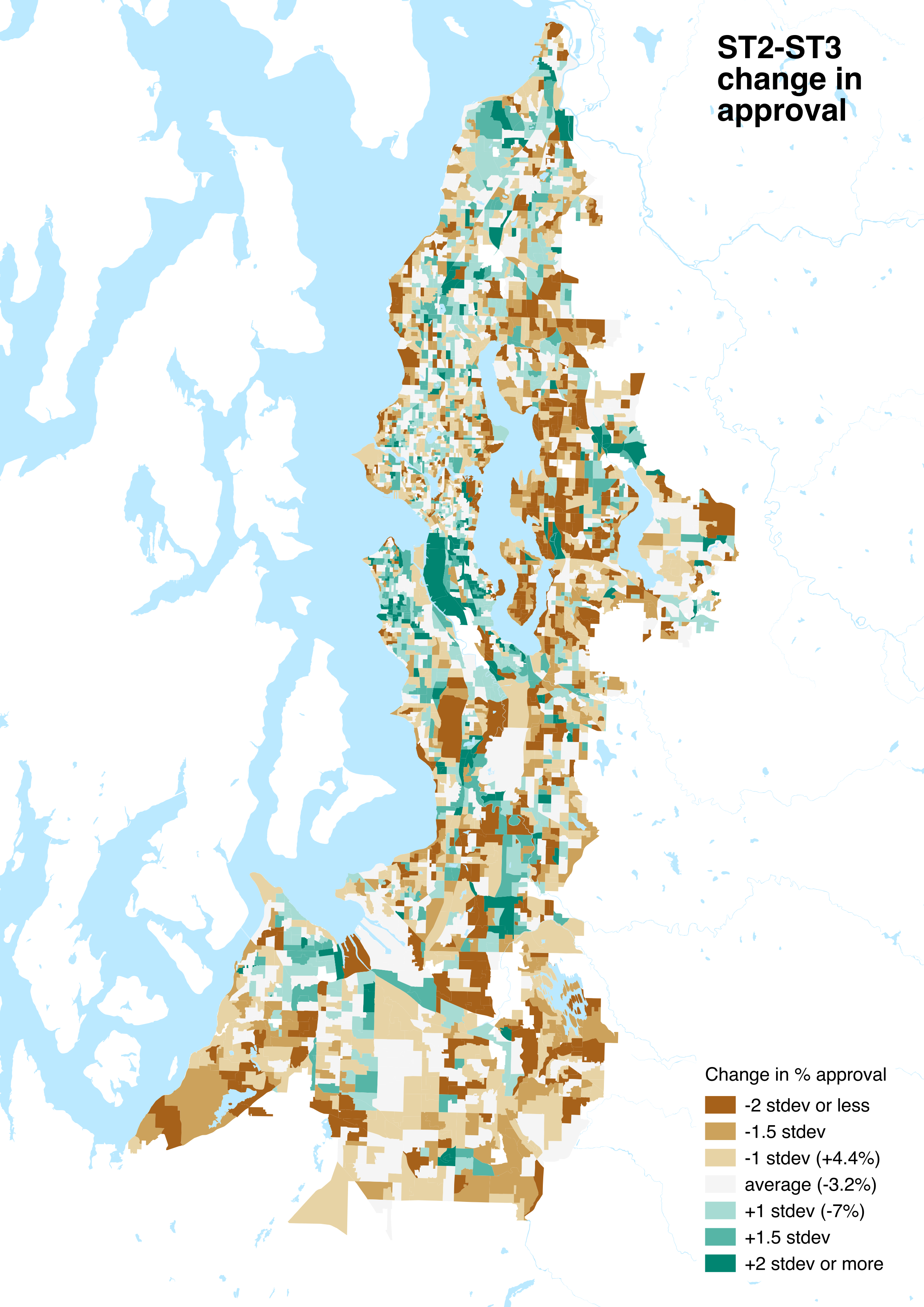
Looking at the precinct level results for ST3, as many transit advocates have, you might agree with Publicola‘s Josh Feit who argued that Sound Transit should not build the park-and-rides promised to suburbs that failed to earn a majority vote in favor of the Sound Transit 3 (ST3) ballot measure. Feit made his argument on December 28th but, full disclosure, at the time I was sipping tropical drinks on the beach in the Bahamas. While we appreciate Feit’s dedication to uncovering the fishy calculations behind the ST3 park-and-rides and he is correct park and rides weren’t enough to win a majority in some suburbs, we disagree with the idea we should now use them as a political cudgel.
We can test the parking=votes assumption now. Of the eight major park and ride projects at future suburban city light rail stations, only three of the suburban cities that are getting some of those parking stalls—Redmond, Issaquah, and Tacoma (not really a suburb)—voted yes on ST3.
Every other suburban city that’s getting new parking—Kirkland, Everett, Kent, Federal Way, and South Federal Way—voted no. That’s nearly 4,000 new parking stalls for about $216 million landing in the no column versus about 2,000 new parking spots for about $120 million landing in the yes column. Put another way the suburban parking vote broke nearly 60 percent no. (The other new parking stalls in ST3 aren’t at light rail stations.)
…
What can ST3—which acknowledged in internal emails that they had no scientific basis for their parking assumptions—do about that now? I’d recommend saving $216 million and start right sizing your mission by eliminating that parking.

Now, there are good reasons to scale back the park-and-rides–such as rededicating funds to better local feeder transit service and even expanding light rail further–but political retribution isn’t one of them. I’m also not convinced at least 50% of the vote is the logical litmus test for the park-and-rides’ political success. What would we expect the suburban vote totals to be without the park-and-rides? Are we saying they made no difference? We don’t have the data to answer that, but since the suburban leaders asked for them time and again it seems doubtful that they had no impact.
If the park-and-rides that failed to deliver a majority in many suburbs and nonetheless ended up swinging a significant margin of votes to the “yes” column, then they still may have been instrumental in passing ST3. The ST3 ballot measure earned 54% of the vote, which is a healthy victory but still a little too close to the 50% mark for comfort. The talented cartographer Oran Viriyincy created a map (below) for Seattle Transit Blog that shows the difference in totals between ST2 and ST3 which may help illuminate precincts in which ST3 projects, and perhaps park-and-rides, helped garner support beyond baseline support for regional transit. Even then, it’s tough to draw sweeping conclusions.
But suffice it to say it’s a little petty to look at vote totals after the fact and strip projects from areas that voted “no” and keep the park and rides where the city voted “yes.” We should build the park-and-rides we promised in the ballot measure. On the other hand, it would be wise to better analyze parking demand and station access alternatives to determine if some of the ramps are too big. If they are, let’s downsize them. We should also look at ways to allow future transit-oriented development to be incorporated into them or even design them for future conversion.

Anyway, congratulations to Feit on his new gig as speechwriter for Mayor Ed Murray. We’ll miss his daily news updates at Publicola, and we applaud him for shining a light on the issue of park-and-rides throughout the process.
Doug Trumm is publisher of The Urbanist. An Urbanist writer since 2015, he dreams of pedestrian streets, bus lanes, and a mass-timber building spree to end our housing crisis. He graduated from the Evans School of Public Policy and Governance at the University of Washington in 2019. He lives in Seattle's Fremont neighborhood and loves to explore the city by foot and by bike.

